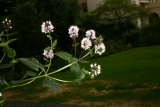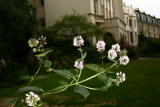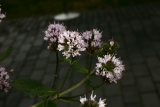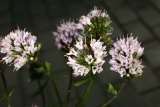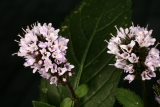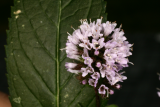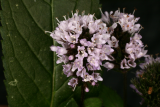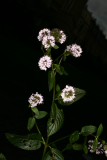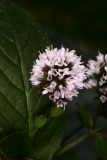Additional notes (click to expand)
Medicinal
Traditional Herbal Medicine Registration (THMR).
Medicinal uses
Uses supported by clinical data
Internally for symptomatic treatment of irritable bowel syndrome (15–20),
and digestive disorders such as flatulence and gastritis (21–23). Externally
for treatment of myalgia and headache (21, 24–27).
Uses described in pharmacopoeias and in traditional systems
of medicine
Internally and externally for the symptomatic treatment of catarrh and
coughs (21, 22).Uses described in folk medicine, not supported by experimental
or clinical data
Treatment of dysentery, diabetes, dysmenorrhoea, fevers, jaundice and
urinary infections (7).
Contraindications
Preparations of Aetheroleum Menthae Piperitae should not be used internally
by patients with infl ammation of the gastrointestinal tract or gall
bladder, or with impaired liver function (21). Hypersensitivity to the essential
oil has been reported (55–57).
WHO monographs on medicinal plants commonly used in the Newly Independent States (NIS). 2010. WHO, Geneva
Other use
Indication: symptomatic relief of minor digestive complaints such as dyspepsia, flatulence and stomach cramps. From Patient information leaflet for preparations licensed as Traditional Herbal remedies in the UK.
Medicines and Health Care Regulatory Authority, 2013 Licensed Traditional Herbal Remedies
An essential oil obtained from the whole plant is used in perfumery. It is also an ingredient of oral hygiene preparations and toiletries. Peppermint leaves are used as an ingredient of pot-pourri. They were formerly used as a strewing herb. Rats and mice intensely dislike the smell of mint. Insect repellent.
Plants for a Future at www.plantsforafuture.org.uk http://www.pfaf.org/user/Plant.aspx?LatinName=Mentha+x+piperita+officinalis
link
Herbal tea is made from the fresh or dried leaves. An essential oil from the leaves and flowers is used as a flavouring in sweets, chewing gum and ice cream.
Plants for a Future at www.plantsforafuture.org.uk http://www.pfaf.org/user/Plant.aspx?LatinName=Mentha+x+piperita+officinalis
link
Toxicity
From Patient information leaflet for preparations licensed as Traditional Herbal remedies in the UK.
Side effects/precautions: Hypersensitivity; do not use with cholangitis, gallstones, biliary disorders requiring medical supervision, hydroxybenzoate allergy, pregnancy/breastfeeding; caution with gastroesophageal reflux; may cause intra-oral symptoms i.e. burning mouth syndrome, recurrent oral ulceration or lichenoid reaction, allergic reactions. Note: some of these may be due to the excipients in the medicine
Medicines and Health Care Regulatory Authority, 2013 Licensed Traditional Herbal Remedies
Mentha x piperita L.
Family: LAMIACEAEGenus: Mentha
Species: piperita L.
Common names: Peppermint; Brandy Mint; Lily-rail; Lily-riall; Curly Mint
Distribution summary: Widely naturalised & cultivated
Habit: Perennial
Hardiness: H4 - Hardy; average winter
Habitat: Rich, moist woods & streamsides
Garden status: Currently grown
Garden location: Europe & Middle East (J)
Flowering months: August, September, October
Reason for growing: Medicinal, other use, traditional herbal registration
